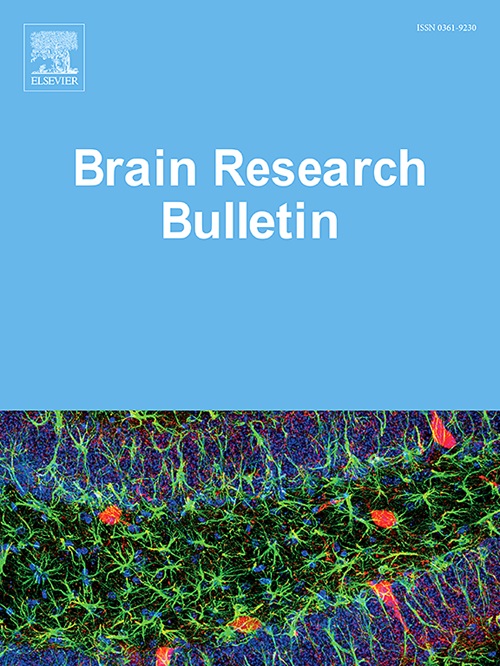IF 3.5
3区 医学
Q2 NEUROSCIENCES
引用次数: 0
摘要
背景:老年人术后认知功能障碍(POCD)的发生率较高。有报道称电针(EA)对治疗 POCD 有益,但其具体调节机制尚不清楚:方法:通过小鼠肝部分切除术,建立小鼠 POCD 模型。方法:通过小鼠肝部分切除术,建立小鼠 POCD 模型,选择百会穴(GV20)作为 EA 治疗的靶点。应用莫里斯水迷宫(MWM)评估小鼠的认知障碍。用HE染色法检测小鼠海马的细胞排列和细胞形态。采用 RT-qPCR、Western 印迹和 IHC 检测基因和蛋白质的丰度。一些商业试剂盒检测了 MDA、GSH 和铁的水平:结果:我们的研究结果表明,肝部分切除手术损害了小鼠的学习和记忆能力,促进了铁变态反应,抑制了GRX1,使GSK-3β/Nrf2通路失活。然而,EA疗法可消除这些影响。此外,GRX1沉默和厄拉斯汀可消除EA介导的改善小鼠POCD的改变:结论:EA通过调节GRX1/GSK-3β/Nrf2通路抑制了铁突变,从而改善了POCD小鼠的术后认知功能障碍。本文章由计算机程序翻译,如有差异,请以英文原文为准。
Electroacupuncture regulates ferroptosis to improve postoperative cognitive dysfunction in mice through mediating GRX1/GSK-3β/Nrf2 axis
Background
The incidence of postoperative cognitive dysfunction (POCD) is higher happening in the elderly. It has been reported electroacupuncture (EA) was beneficial to the treatment of POCD, but its specific regulatory mechanism is still unclear.
Methods
Through partial hepatectomy in mice, POCD model of mice was established. Baihui acupoint (GV20) was selected for targeted point of EA therapy. Morris water maze (MWM) was applied to evaluate cognitive impairment of mice. HE staining was used to examine cell arrangement and cell morphology in hippocampus of mice. RT-qPCR, western blot and IHC were employed to detect abundance of genes and proteins. MDA, GSH and iron levels was measured by some commercial kits.
Results
Our findings revealed that partial hepatectomy surgery impaired learning and memory ability of mice, promoted ferroptosis. inhibited GRX1 and inactivated GSK-3β/Nrf2 pathway. However, EA therapy abolished these effects. In addition, GRX1 silencing and erastin abolished EA-mediated alterations of improving POCD in mice.
Conclusion
EA suppressed ferroptosis by regulating GRX1/GSK-3β/Nrf2 pathway to improve postoperative cognitive dysfunction of POCD mice.
求助全文
通过发布文献求助,成功后即可免费获取论文全文。
去求助
来源期刊

Brain Research Bulletin
医学-神经科学
CiteScore
6.90
自引率
2.60%
发文量
253
审稿时长
67 days
期刊介绍:
The Brain Research Bulletin (BRB) aims to publish novel work that advances our knowledge of molecular and cellular mechanisms that underlie neural network properties associated with behavior, cognition and other brain functions during neurodevelopment and in the adult. Although clinical research is out of the Journal''s scope, the BRB also aims to publish translation research that provides insight into biological mechanisms and processes associated with neurodegeneration mechanisms, neurological diseases and neuropsychiatric disorders. The Journal is especially interested in research using novel methodologies, such as optogenetics, multielectrode array recordings and life imaging in wild-type and genetically-modified animal models, with the goal to advance our understanding of how neurons, glia and networks function in vivo.
 求助内容:
求助内容: 应助结果提醒方式:
应助结果提醒方式:


